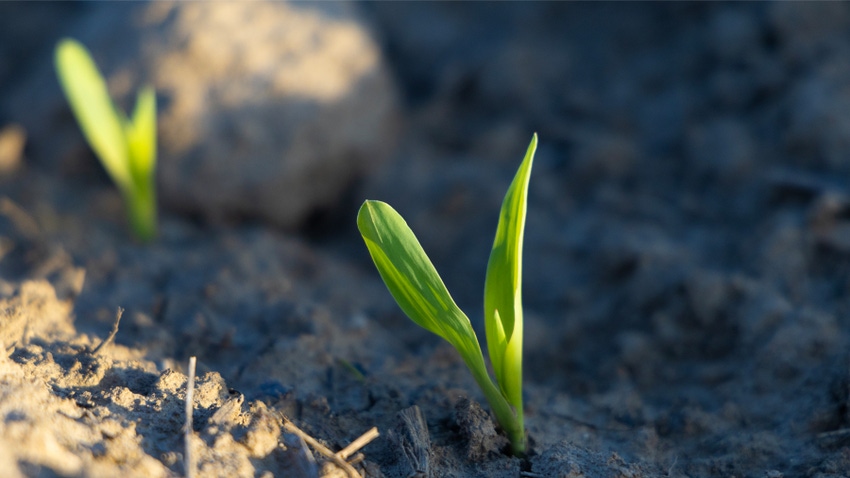March 21, 2024

by Clarabell Probasco
Each spring presents corn producers with a new opportunity to grow the best crop they can. There is nothing sweeter than seeing their hard work and dedication pay off when the combine rolls through the field in the fall.
But wanting to win during harvest season with high corn yields means that we need to be diligent in scouting cornfields from the beginning of the growing season. What is classified as an early-season scouting trip through a field should be based on planting date and current growing stage, rather than calendar date. Scout for the following:
Stand counts. Following planting, one of the most important actions we can do to ensure we are starting the growing season off strong is to perform stand counts. Stand counts are a quick and easy measurement taken to determine the population, spacing and emergence uniformity of the field. Follow these steps to complete a stand count assessment:
Measure out a 1000th of an acre (based off row width). A 30-inch row spacing equals 17 feet, 5 inches.
In the measured area, count the number of live plants and record.
Repeat steps 1 and 2 across multiple, randomly selected areas of the field.
Average the counts taken from across the field and multiply the number by 1,000. This will give you the average plant population per acre.
Staging corn. Properly identifying what stage your cornfield is in helps make further management decisions, such as planning herbicide applications or even sidedressing nitrogen. The leaf collar method can be used in vegetative growth stages by counting the number of visible leaf collars on the corn plant. VE is the initial stage that begins with emergence. The addition of each new leaf with a fully developed leaf collar is called V(n), with (n) standing for the number of leaf collars counted.
Weeds. Starting the growing season off with a clean slate is important. Cornfields may be prepped to be weed-free at planting time by using tillage practices or implementing a burndown herbicide program. Many environmental factors can impact the effectiveness of applied herbicides or the germination of new weed populations.
Scout the field to ensure that the newly growing corn plants are not competing for water and nutrient resources. Weed populations that have emerged since initial control tactics were implemented should be managed properly.
Insects. Pests can damage corn seedlings and should be considered when completing early-season scouting. Feeding on the root tissues or corn seed can be commonly caused by seed corn maggots, white grubs and wireworms. Early season insect pests can play an impact on uneven stands across fields.
Diseases. If the growing corn plants appear discolored, wilted or stunted, take time to study the root systems. While seed treatments that accompany many hybrids work well, there is still risk of seedling diseases taking place. When inspecting roots, look for dark discoloration and any compromised root integrity.
Replanting decisions. Some growing seasons don’t always start out as strong as originally desired. If there is concern for the potential need of replanting a field, carefully complete a full scouting assessment of the overall field health and uniformity. If replant concerns still exist after scouting has been completed, contact your local agronomist to provide guidance for management decisions moving forward.
Allow this year’s corn crop to be successful from the start. Following planting, take the time to visit each field and thoroughly scout for any abnormal plants or areas. Find additional information over early-season scouting by contacting your local Iowa State University Extension agronomist or by visiting crops.extension.iastate.edu/blog.
Probasco is an Iowa State University Extension field agronomist.
Read more about:
ScoutingYou May Also Like




